How do I make jambalaya? Start by browning 1 lb smoked sausage and 1 lb chicken in a Dutch oven, then sauté the 'holy trinity' (onions, bell peppers, celery) until soft. Add 2 cups rice, 4 cups broth, diced tomatoes, and spices including 2 tsp smoked paprika and ½ tsp cayenne. Simmer covered for 20-25 minutes without stirring. Let rest 10 minutes before serving. This authentic method yields perfectly textured, flavorful jambalaya every time.
Table of Contents
- What Is Jambalaya?
- The 5 Essential Steps to Perfect Jambalaya
- Simple Ingredient List for Authentic Flavor
- Step-by-Step Cooking Instructions
- 7 Pro Tips for Restaurant-Quality Results
- Top 4 Mistakes (and How to Fix Them)
- Spice Ratio Cheat Sheet
- Easy Variations for Different Diets
- Quick Answers to Top Questions
What Is Jambalaya?
Jambalaya is a classic Louisiana one-pot meal featuring rice, meat, vegetables, and spices. Unlike gumbo, it's cooked all together in one pot with the rice absorbing the flavorful broth. There are two main styles: Creole (with tomatoes) and Cajun (without tomatoes).
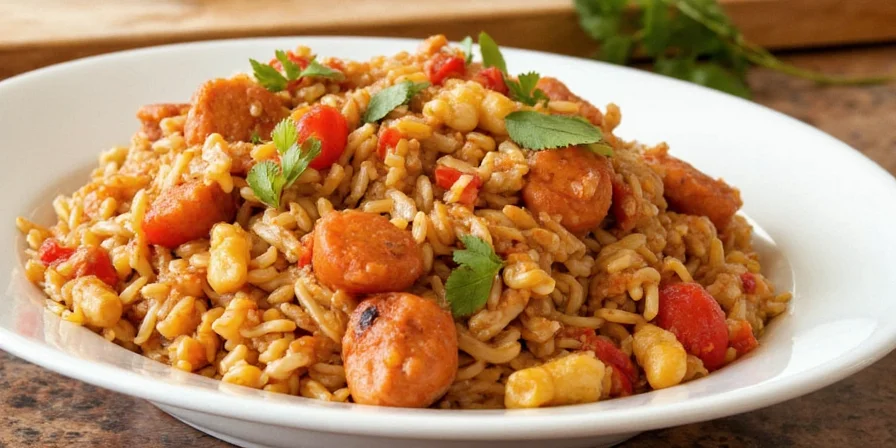
The 5 Essential Steps to Perfect Jambalaya
- Brown proteins first: Get a good sear on sausage and chicken for maximum flavor
- Sauté the holy trinity: Cook onions, peppers, and celery slowly until soft
- Toast the rice: Cook rice in the pot for 2-3 minutes before adding liquid
- Add liquid gradually: Maintain a 2:1 ratio of liquid to rice for perfect texture
- Let it rest: Allow 10-15 minutes off heat before serving for best results
Simple Ingredient List for Authentic Flavor
Here's exactly what you need for classic jambalaya (serves 6):
- 2 tbsp olive oil or bacon fat
- 1 lb smoked sausage (Andouille preferred), sliced
- 1 lb boneless chicken thighs, cubed
- 1 large onion, chopped
- 1 green bell pepper, chopped
- 2 stalks celery, chopped
- 3 garlic cloves, minced
- 2 cups long-grain white rice
- 4 cups chicken broth
- 1 (14 oz) can diced tomatoes (for Creole style)
- 2 tsp smoked paprika
- ½ tsp cayenne pepper
- 1 tsp dried thyme
- 2 bay leaves
- Salt and black pepper to taste
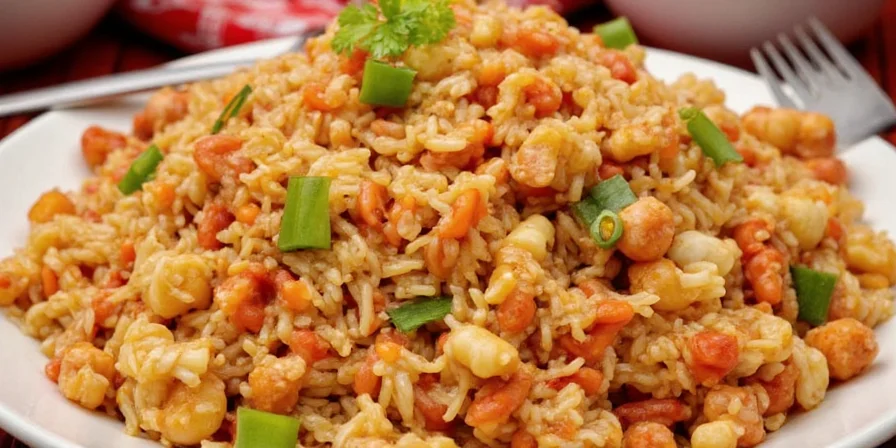
Step-by-Step Cooking Instructions
- Prep ingredients: Chop all vegetables and measure spices beforehand
- Heat oil in large Dutch oven over medium heat
- Brown sausage (5-7 minutes), remove and set aside
- Brown chicken (5-6 minutes), remove and set aside
- Sauté vegetables until soft (8-10 minutes)
- Add garlic and spices, cook 1 minute until fragrant
- Toast rice for 2-3 minutes, stirring constantly
- Add liquids and meats, bring to boil
- Reduce heat, cover, and simmer 20-25 minutes without stirring
- Remove from heat, let rest 10-15 minutes before serving
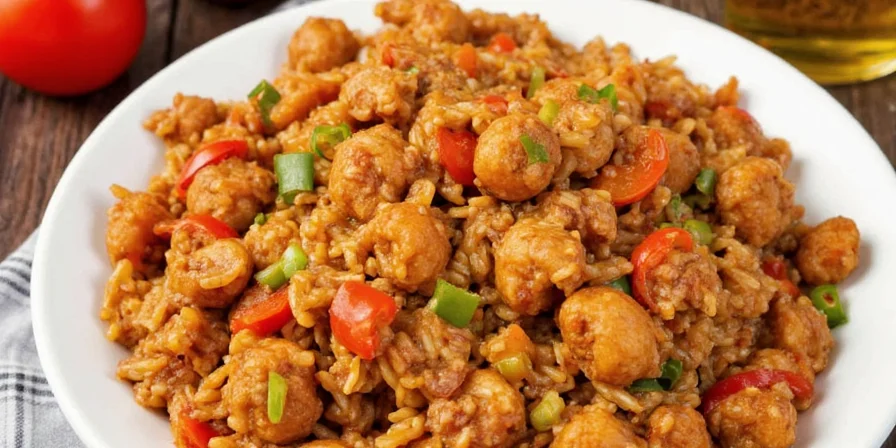
7 Pro Tips for Restaurant-Quality Results
- Use room temperature proteins for better browning
- Don't skip the rice toast - creates protective starch barrier
- Maintain true low simmer (bubbles barely breaking surface)
- Measure broth precisely - 2 cups liquid per 1 cup rice
- Resist stirring while cooking to prevent mushy rice
- Add acid at the end - 1 tbsp apple cider vinegar brightens flavors
- Rest covered allows residual heat to finish cooking evenly
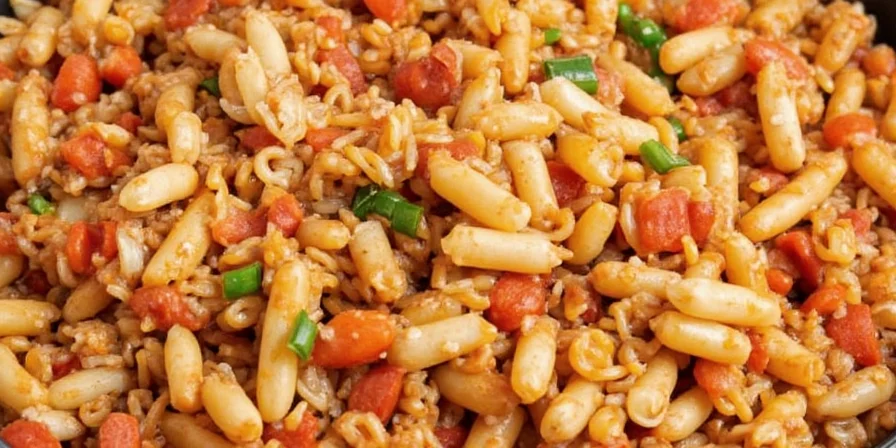
Top 4 Mistakes (and How to Fix Them)
| Mistake | Result | Fix |
|---|---|---|
| Using wrong rice | Mushy or uneven texture | Stick to long-grain white rice |
| Adding too much liquid | Soupy consistency | Follow 2:1 liquid-to-rice ratio |
| Stirring during cooking | Gummy rice texture | Cook undisturbed after boiling |
| Skipping meat browning | Flat, one-dimensional flavor | Take time to properly sear proteins |
Spice Ratio Cheat Sheet
Get authentic flavor with these precise measurements:
| Spice | For 4 Servings | Adjustment Tip |
|---|---|---|
| Smoked Paprika | 2 tsp | Base flavor - don't reduce |
| Cayenne Pepper | ½ tsp | Adjust to heat preference |
| Dried Thyme | 1 tsp | Essential for authenticity |
| Black Pepper | 1 tsp | Freshly ground preferred |
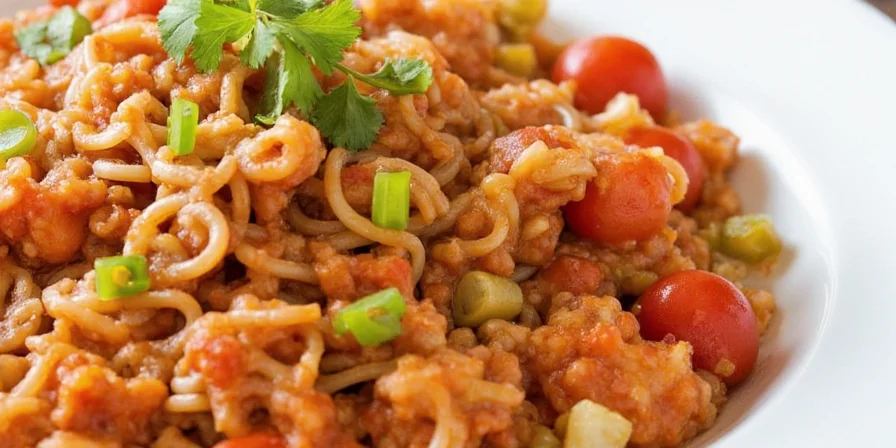
Easy Variations for Different Diets
Customize jambalaya for any preference:
- Seafood Version: Substitute chicken with 1 lb shrimp added in last 5 minutes
- Vegan Option: Use plant-based sausage and vegetable broth
- Low-Sodium: Use low-sodium broth and reduce added salt by half
- Spicy Boost: Add 1 diced jalapeño with the vegetables
Quick Answers to Top Questions
How long does jambalaya take to make?
Prep takes 20 minutes and cooking takes 35-40 minutes, for a total of about 1 hour. Most time is hands-off simmering.
Can I make jambalaya ahead of time?
Yes! Jambalaya actually tastes better the next day. Store cooled jambalaya in an airtight container for up to 4 days. Reheat gently with a splash of broth to restore moisture.
What's the secret to preventing burnt bottom?
Use a heavy-bottomed Dutch oven, maintain true low heat (not boiling), and don't skip toasting the rice. If using electric stove, consider a heat diffuser.
Can I use instant rice?
No. Instant rice has already been partially cooked and will turn to mush. Long-grain white rice is essential for proper texture.
How do I know when it's done?
Rice should be tender with no crunch, liquid fully absorbed, and ingredients fully cooked. The top will look slightly dry when done. Resting time is crucial for perfect texture.

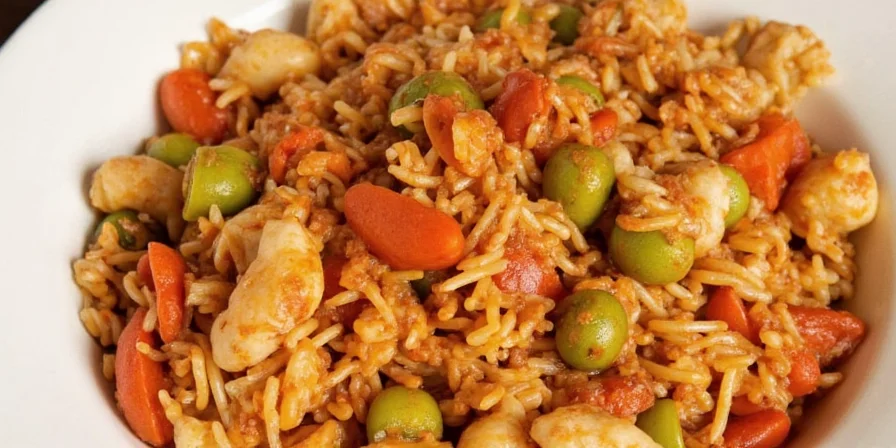









 浙公网安备
33010002000092号
浙公网安备
33010002000092号 浙B2-20120091-4
浙B2-20120091-4